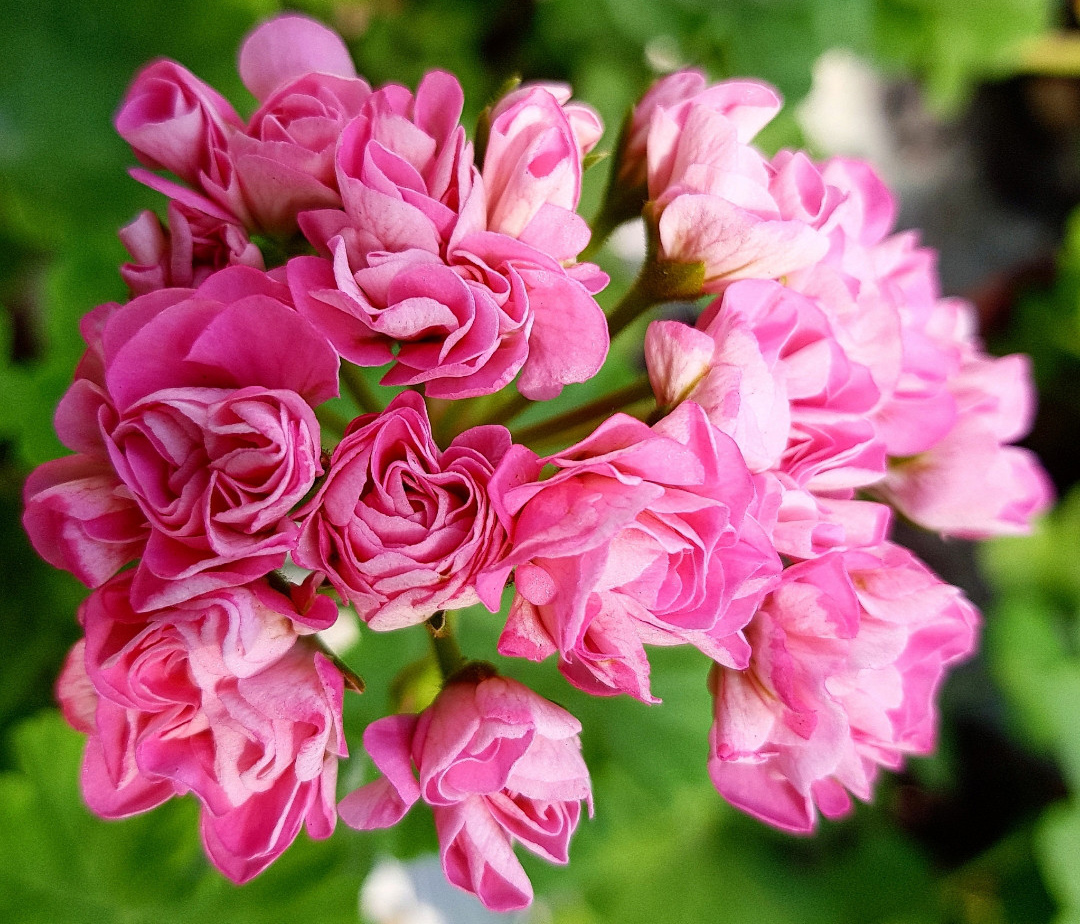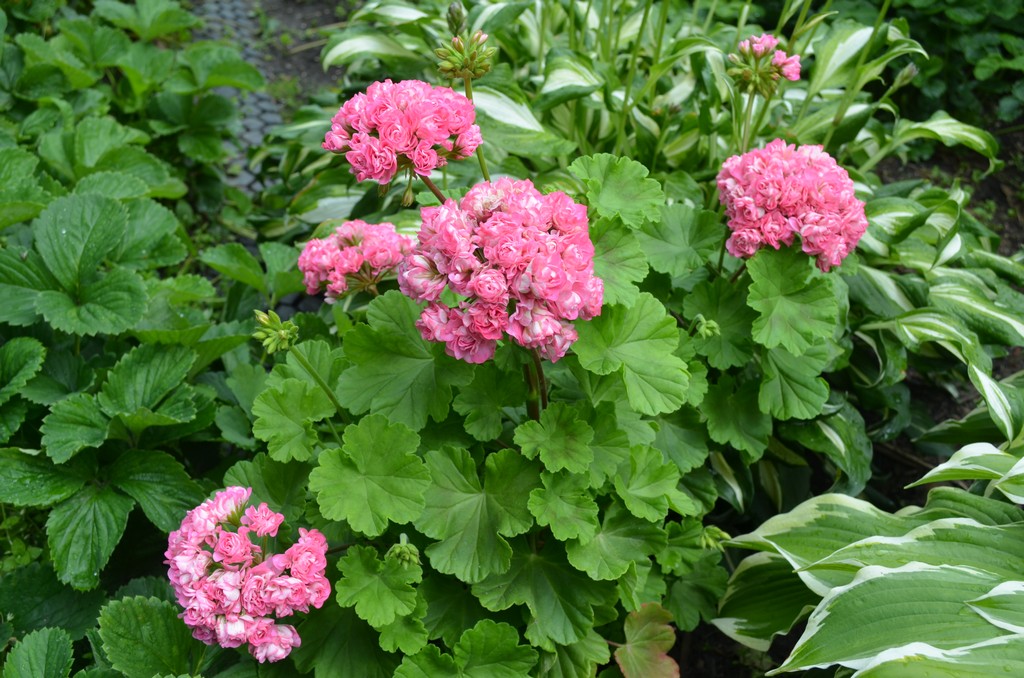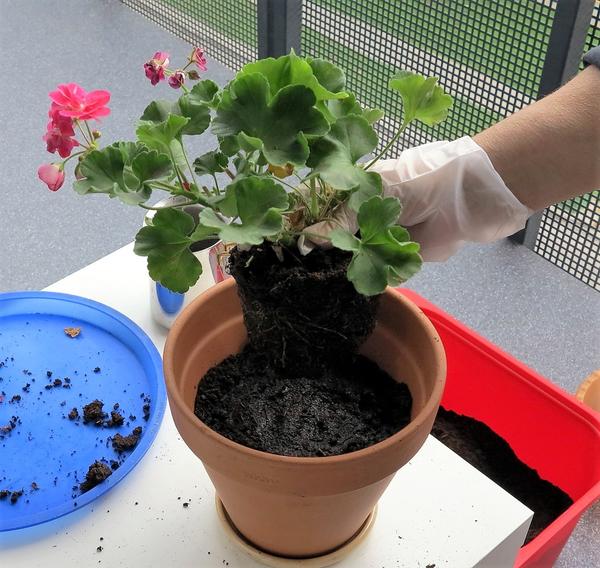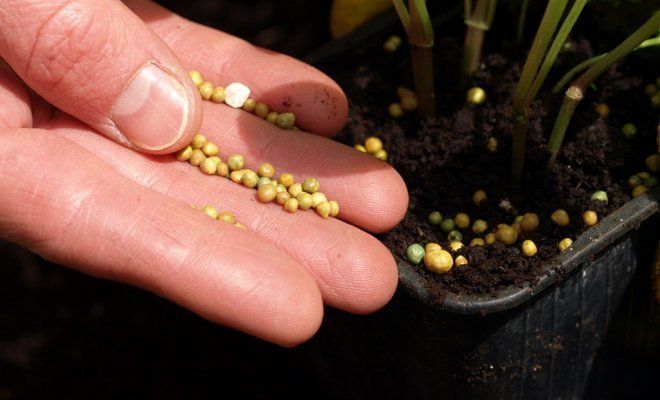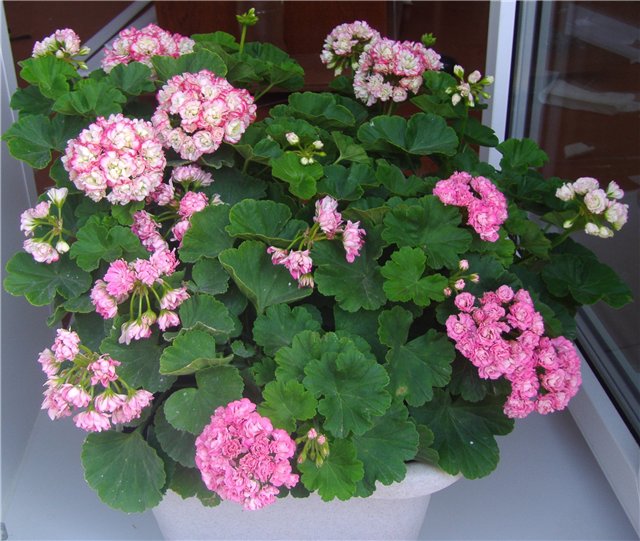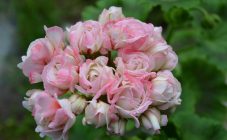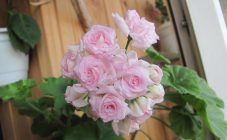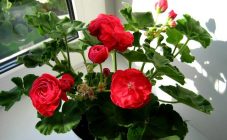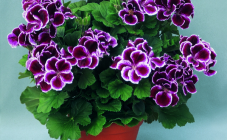Content:
Pelargonium has long won one of the first places in beauty among indoor plants. The Australian variety Swanland Pink fell in love with many flower growers, due to the similarity with rosebuds, with a slight difference: pelargonium blooms more abundantly and luxuriantly. The description of the Australian geranium attracts even novice gardeners.
Breeding history
Pelargonium Rosebudnaya has recently enjoyed increased popularity not only among collectors of rare varieties of flowers, but also among novice florists. The thing is that in terms of external parameters, it is similar to roses. This is a group of zoned pelargoniums, which have certain differences from other varieties. Terry flowers of this group of plants have many petals that do not allow the flower to fully bloom, because of this, the half-opened bud visually resembles a rose flower.
Pelargonium Swanland Pink is a decorative flower that came to Russia from Australia. A variety with fairly large peduncles that are able to stay on the stem for a month, if the optimal temperature regime is observed. Based on the name, it is clear that the color of this plant is pale pink. It can bloom about 3 times per season. The number of peduncles depends on the correct care and maintenance of the flower. The variety was bred directionally by botanist Arthur Langley Smith in 1827. The result was the selection of curly pelargonium and brilliant geranium.
Plant characteristics
The Pelargonium Australien Pink rosebud has a deep green stem and leaves that emphasize the delicate pink peduncles extremely favorably. The leaves are characterized by a corrugated edging. This is a bush type perennial plant, belongs to medium-sized varieties. The buds completely bloom extremely rarely, subject to optimal temperatures, which should not exceed 30 ° C. The peculiarity of the Swanland Pink variety is that the flowers do not crumble, despite the very large number of petals.
The plant is unstable to low air temperatures. This variety was produced for cultivation in indoor conditions or in greenhouses, in extreme cases. For the winter period, the greenhouse plant requires shelter. It tolerates a long absence of watering. Even with a prolonged absence of moisture, it produces a large number of side shoots. The bush is strong, unpretentious to soil and water quality. The only requirement of Pelargonium Australia Pink Rosebud is watering with water that is at room temperature.
Pelargonium Australian Pink Rosebud forms lush inflorescences with large peduncles reaching a diameter of 3-4 cm. One shoot can contain up to 5 inflorescences. The petals of the buds are terry, the outside is a tone lighter than the inside. The flowering period is quite long, even when compared to other varieties of pelargonium.
Planting and keeping pelargonium
When planting the Australian Pink Pelargonium variety, you should take into account the fact that it does not tolerate direct sunlight on its leaves. This flower variety prefers partial shade. Even the direct rays of the morning sun can cause burns in the flower, respectively, and other diseases associated with a decrease in immunity. If the plant is on the south side, it is important not to forget to create shade for the midday period.
Pelargonium Svanland Pink does not tolerate low air temperatures. Temperatures below 10 ° C can be fatal to the flower. Since the variety is bred in a warm country, it is not surprising that it grows well at medium temperatures.
The soil for planting this variety of pelargonium must be nutritious and loose. The looseness of the soil provides the correct air exchange required by the plant's root system.
In the spring, Pelargonium australien pink rosebud needs frequent feeding. They are brought in once every two weeks. In order to increase the splendor of the leaves, the Australian pelargonium should be fed with nitrogenous fertilizers. When the first buds appear, geranium needs potassium and phosphorus.
Pelargonium Australian Rosebud has a rather intensive development, so it needs frequent transplants. Basically, they are done in order to divide the plant's root system into several, thereby relieving it. With each subsequent transplant, the planting container should be taken of a larger size than the previous one.
Pelargonium pink rosebud must be pinched and trimmed. Only in this case can you form a beautiful bush shape.
In September, the plant begins to prepare for wintering. During this period, it is recommended to reduce the frequency of watering and completely abandon any feeding. Geranium remains in suspended animation at the end of winter. As soon as the day becomes longer than the night, the plant departs from hibernation.
Advantages and disadvantages
Like any other flower, the australian pink rosebud geranium has its advantages and disadvantages.
Among the advantages are the following points:
- Abundant, lush bloom;
- The size of the peduncles in diameter;
- Unpretentiousness to soil and watering;
- Decorativeness;
- Ease of forming a bush, etc.
Pelargonium also has disadvantages. For instance:
- Low frost resistance;
- Specific smell;
- Fear of waterlogging;
- Propensity to disease, etc.
Despite the large number of disadvantages, compared with other plant varieties, with proper care and maintenance, they can be avoided. The most important thing is not to forget that the plant needs diffused light and moderate watering, and even a novice gardener can successfully cope with its development.
